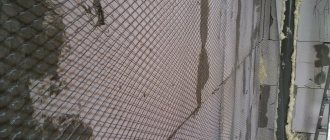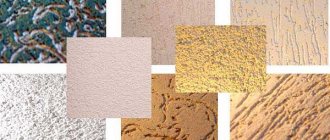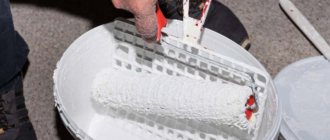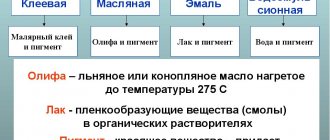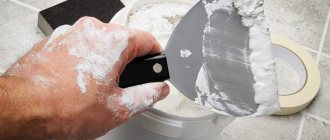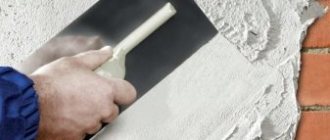- Decorative plaster
- Venetian plaster
- Textured plaster
- Decorative paint
Repair or decoration in the modern world is rarely complete without decorative plaster. In an effort to improve his home, a person calculates every finishing material as much as possible. The vast majority of people choose ease of installation, forgetting about performance characteristics and service life. In addition, the choice is limited to several types of wallpaper, which do not always harmonize with the interior decor. This article contains details about decorative, structural and Venetian plasters, how to properly finish with decorative plaster, as well as where and how to buy high-quality decorative coatings at affordable prices.
What is decorative plaster?
Decorative plaster is a ready-to-use composition intended for finishing walls and ceilings, as well as decorative and architectural interior elements. After application to the walls, this liquid composition hardens and over time turns into a durable monolith. In other words, decorative plaster is an alternative to wallpaper, liquid wallpaper, and painting. Decorative coatings differ in composition and purpose. Let's tell you a little more.
Let's find the difference between liquid wallpaper and decorative plaster
With the advent of liquid wallpaper on the market of construction and finishing materials, they have become a huge competitor to finishing with decorative plaster. Owners of houses and apartments have a question: what to choose? Let us describe a brief comparative description.
Characteristics Decorative plaster
- Suitable for all interior styles ★
- Environmental friendliness, safety ★
- Vapor permeability ★
- Protection against mold, mildew ★
- Advance preparation required ★
- Easy to apply/install ★
- Possibility of applying it yourself ★
- Presence of seams, joints ✘
- Resistant to shocks and scratches ★
- UV resistance (fading) ★
- Number of wet abrasion cycles from 10000
- Non-flammability ★
- Maintainability ★
- Lifespan 15-20 years
- Cost of finishing material for 1 sq.m. from 200 to 1500 r/m2
- Variety of colors and textures More than 90 colors and different effects depending on the application method
Characteristics Liquid wallpaper
- Suitable for all interior styles ✘
- Environmental friendliness, safety ★
- Vapor permeability ✘
- Protection against mold, mildew ✘
- Advance preparation required ★
- Easy to apply/install ★
- Possibility of applying it yourself ★
- Presence of seams, joints ★
- Resistant to shocks and scratches ✘
- UV resistance (fading) ✘
- Number of wet abrasion cycles 5-100
- Non-flammability ✘
- Maintainability ✘
- Lifetime 3-10 years
- Cost of finishing material for 1 sq.m. from 50 to 2500 RUR/m2
- Variety of colors and textures On average 20 shades in the collection, few solid colors
Many construction portals describe the “mythical advantages” of liquid wallpaper, such as resistance to shrinkage of the house. The fact is that the house cannot shrink; in principle, it does not dry out. And if precipitation does occur, it will tear any material (except for wallpaper, which will simply peel off a little at the tear site). In addition, another dubious plus is that liquid wallpaper can be easily removed from the wall. The logical question is - why? There is no need to remove decorative plaster, because its beauty and aesthetics never get boring. If this does happen, you can initiate a small cosmetic repair and simply change the color of your coating directly on the wall.
The main difference between finishing with decorative plaster and liquid wallpaper is environmental friendliness. Liquid wallpaper is paper, thread and a binder, and decorative plaster is water and natural marble components.
Whatever material you use to create your interior, it will always have strengths and weaknesses. The strengths of decorative plaster include:
- Versatility
- applied to any substrate: aerated concrete, brick, plasterboard, concrete, wood, etc. - Plasticity
- some decorative putties can hide even significant defects. - Impact resistance
– coatings are not afraid of mechanical stress. - Durability
– service life exceeds all finishing analogues. - UV resistance
- the color does not fade or fade during the entire service life, thanks to imported high-quality colorants. - Integrity
- due to the absence of joints and seams, a beautiful, aesthetic and modern interior is obtained.
Additional advantages of decorative plaster
- The environmental friendliness of decorative plasters allows them to be used in bedrooms and children's rooms.
- Moisture-resistant properties prevent destruction when exposed to high levels of humidity, which allows the decor to be used in bathrooms and pools.
- Vapor permeability creates protection against the emergence of microorganisms.
- Easy to clean - no chemicals required, decorative coatings do not attract dust and dirt.
- Facade plasters can withstand temperature changes and aggressive weather conditions. Operating temperature -40 - +60°C.
- Variability in the implementation of design ideas and elements.
Additional disadvantages of decorative plaster
- High cost of decorative materials, as well as finishing work.
- The technology for applying certain types of decorative plasters is impossible without the involvement of specialists.
- Thin-layer mixtures require ideal surface preparation (as for painting)
- The completion of all dust-generating work is required, as well as compliance with a number of rules when decorating.
- It is not recommended for use in new buildings that have not completed the settling process, there is a high probability of material ruptures after drying
Application area
Due to its properties, decorative plaster has found wide application in the field of finishing work. The rich palette, texture and increased strength made this type of coating ideal for both interior spaces and facades.
Moisture resistance and ease of maintenance make it possible to use this material for finishing the kitchen, in which, using different types of plasters, you can separate the dining and work areas.
The same properties of the coating made it a popular design option for the hall and even bathrooms. But most often, decorative coatings are used to decorate living rooms, bedrooms and children’s rooms, where environmentally friendly and warm material creates a cozy and relaxing atmosphere.
Versatility of application is the quality for which decorative plaster is especially valued.
With its help, you can not only decorate the walls, but also decorate the ceiling, which will look much more interesting than rather ordinary stretch and suspended ceilings. And the special strength allows you to lay the coating even on the floor.
And, of course, textured plaster is a real godsend for designers, because it will easily fit into any interior. Frescoes made of Venetian plaster look great in a classic style, and liquid wallpaper is a common attribute of a Rococo-style interior.
By simulating a surface made of natural stone or leather, it can be incorporated into the design of a hunting lodge or chalet, and flock wall coverings in the shape of fur will be an ideal option for an interior in the “shabby chic” style that is again gaining popularity.
Types and types of decorative materials
Decorative plaster is divided into smooth (Venetian) and textured.
Textured plaster. Includes several materials with different, but clearly defined textures (relief, structure). It is used indoors and outdoors, and some are used on facades and can withstand harsh operating conditions. A facade made of decorative plaster is a reliable, high-quality and cost-effective alternative to tiles and stone. Textured plaster is popular not only because of its unusual appearance, but also because of a number of properties:
- Used for interior and exterior decoration
- Huge selection of colors, their combinations, various structures and reliefs
- Most of the existing coatings can be applied with your own hands, thanks to simple technology
- Suitable for walls, ceilings and various design elements
Smooth (Venetian) plaster. This type includes almost all thin-layer putties, paints, Moroccan plaster, and Venetian coatings. There are many more varieties of them than textured ones, but they are inferior in number and options for decorated effects. Main characteristics:
- Used only for interior work
- Can be used in rooms with high humidity only when treated with protective varnish or wax
- Resistant to cleaning, including detergents
- They are combined not only in colors, but also in effects
Application of decorative plaster
According to this characteristic, decorative plasters are used for interior and exterior work.
In turn, decorative plaster is divided into types: External plaster. One of the simplest ways to create a beautiful and attractive facade of a house is to cover it with decorative plaster. Unlike simple painting, a decorative layer will eliminate minor surface defects, improve the heat and sound insulation parameters of the walls, and also protect your home from adverse weather influences.
External decorative plaster
One of the simplest ways to create a beautiful and attractive facade of a house is to cover it with decorative plaster. Unlike simple painting, a decorative layer will eliminate minor surface defects, improve the heat and sound insulation parameters of the walls, and also protect your home from adverse weather influences.
Interior decorative plaster
In order for your interior to become truly unique, luxurious, and at the same time have high performance characteristics, decorative plaster is used. Creating unusual effects such as polished marble, crocodile skin, tree bark, wet silk, craquelure, frosty frost and others depends on the material you choose. Such coatings will not be able to hide defects, so high-quality preparation is required.
Differences from other types of finishes
Construction stores offer a huge range of different materials for renovation of premises. It is not easy to make a final choice in all this variety, so it is better to decide in advance what exactly you want to purchase, and to do this, study the features of this or that material.
In beige color
The pros and cons of various wall coverings are shown in the table.
| What are we comparing with? | What's the result? |
| Wallpaper | Compared to wallpaper, decorative plaster is more durable. It does not require special preparation of the walls, saving time and money. |
| Painting | Unlike paint, plaster is better suited for interior solutions. The variety of types and methods of application will satisfy the most original designer. Plaster is more durable than conventional painting and does not require additional surface treatment. |
| Panels | Compared to wooden or plastic panels, artificial plaster is more economical and durable. At the same time, it imitates almost any material. |
In many cases, the use of decorative plaster is more appropriate than the choice of other materials. This material has practically no negative qualities, therefore, given the huge selection, everyone will be able to choose interior plaster to suit their taste.
Any type of it is made even more individual by adding additional ingredients, dyes, application and leveling techniques. Using special rollers, patterns and ornaments are made on wet plaster - after drying, they will remain stable and clear.
Acrylic decorative plaster
Acrylic plaster is made from an aqueous dispersion of acrylic polymers. The fillers are crumbs and granules of natural stones - marble, granite, slate, pebbles, etc. The resulting surface can be smooth, rough, or voluminous.
Supplied in buckets from 9 to 45 kg. The most popular container is 25 kg, since with it you can easily climb scaffolding. Its price depends on the chosen material, the amount of work and tinting, ranging from 1600 to 6500 rubles per bucket. Supplied in white, tinted according to international tinting catalogs (NCS, Ral, Nova, etc.) or painted after drying.
The excellent mobility of the solution, ease of application and versatility of acrylic compositions have made them the most popular among decorative materials.
Also, acrylic decorative plasters combine the following qualities:
- Resistant to climatic fluctuations and factors (sultry summer, severe winter, rainy autumn, etc.). These criteria allow it to be used both inside buildings and on facades
- Excellent thermal insulation properties
- The plasticity of the material will hide minor defects and cracks, and the elasticity will prevent the appearance of minor cracks at the slightest settlement of the building
- The service life of coatings is more than 15 years
- Environmentally friendly. The base contains no phenols, resins, or volatile alcohol compounds
- Vapor permeability will allow the facade to “breathe”, preventing the “greenhouse effect” and the appearance of microorganisms
- Easy to care for – easy to clean, including with a stream of water under pressure. In addition, the façade is self-cleaning in rainy weather.
Among the disadvantages:
- Higher price compared to mineral base
- When working with some plasters, an experienced craftsman is required
- High electrostatic ability, attracts dust to the surface
When buying acrylic decorative plaster for finishing, be sure to check its expiration date!
Current colors
Plaster mixtures are presented in a wide range of colors. Interior designers give recommendations for different types of premises on choosing the color that will best harmonize with the decor.
In the living room, decorative plaster can be combined with other types of finishes, such as wallpaper or wood panels. For a small room, it is better to choose a light-colored composition with reflective properties. Venetian plaster with a silver, golden or blue sheen will add sophistication to the living room.
The bedroom should be conducive to peace and sleep. Give preference to pastel, muted shades. By choosing a mixture with large fractions, you can create a volumetric effect and emphasize the architectural features of the interior.
If you want to add brightness to the room, use it on the accent wall behind your head.
You can be more creative when choosing colors for your kitchen and bathroom. More rich tones may be present here.
You can color the plaster yourself to your taste, choosing a white mixture as a base.
Silicone decorative plaster
Silicone decorative plaster was developed specifically for facades. It has increased vapor permeability. It is the silicone base that is recommended for the “wet facade” system. In addition, its properties do not exclude indoor use.
It is produced, like acrylic, in a ready-to-use form, packaged from 15 to 45 kilograms. The high cost is due to the supply of silicone resins from European countries. A 25kg bucket costs from 3,000 to 9,000 rubles, also depending on the coloring and the amount of work. Decorated effects – bark beetle, fur coat, lamb.
The price of silicone decorative plaster is its only drawback. But among the advantages we highlight the following: Self-cleaning due to weather precipitation.
- High resistance to ultraviolet radiation
- Frost resistance. Not afraid of sudden temperature changes
- Does not collapse when saturated with water
- Vapor permeability eliminates the occurrence of microorganisms such as fungi and mold
- Extended service life - manufacturers claim at least 25 years
- No perfect surface preparation is required - the plaster covers minor defects and cracks
It should be remembered that silicone plaster is applied to the reinforced layer after installation of insulation - high-density mineral wool slabs.
Before you buy silicone plaster, make sure that your facade requires its use. If your house is built from vapor-permeable materials and insulated with mineral slabs, this is necessary. In other cases, you should not overpay, an acrylic composition is enough.
Advantages and disadvantages
Like any finishing material, decorative plaster has its pros and cons. Should I use it in the kitchen? Let's try to figure this out.
Carefully study the features of the material.
Important: The disadvantages of decorative plaster most often depend on its type.
The undeniable advantages of decorative plaster include :
- Decorative plaster can be applied to all types of coatings: concrete, wood, iron.
- Thanks to the characteristics of the material, you get a seamless coating. An ideal choice for spacious kitchens where wide walls need to be finished.
- There is no need to carefully level the coating before applying decorative plaster: the light relief even adds charm to the finish.
- The material allows air to pass through easily, allowing the walls to breathe.
- The walls can be vacuumed and washed, which is very important in the kitchen.
- Mineral impurities prevent the development of fungus and mold.
- This is a very wear-resistant and durable material.
- Ease of repair. Even if a fragment of the wall is damaged, it is not necessary to restore the entire surface - it is enough to replace the deformed part.
Take into account the characteristics of the material so as not to encounter unpleasant surprises.
The disadvantages can be considered :
- If the building is still in the process of shrinkage, cracks may appear in the mineral decorative plaster. They are easy to seal, but we still consider this property a disadvantage.
- Plaster is expensive. In addition, you will have to pay a lot for finishing work - not all builders have yet learned how to work professionally with the material.
- If you choose mineral plaster, be prepared for the fact that after application it will have to be painted - the material is produced only in white.
- Acrylic type of decorative plaster cannot be used over slabs - it can release toxic impurities.
- To apply silicate plaster, it is necessary to first apply a special primer. In addition, it requires special care in application.
- This also applies to the silicone type. In addition, it is considered the most expensive, if you do not take into account exclusive design options.
Decorative plaster can be an excellent material if you take into account all the nuances.
However, despite a fairly wide list of disadvantages, decorative plaster is considered one of the most popular coatings for the kitchen. Durable, reliable and beautiful - it will suit a room decorated in any interior style.
Mineral decorative plaster
Mineral plaster is a dry mixture, for use you only need to add water. Its composition is cement, sand, fillers made from natural stones similar to other bases, and various plasticizers and additives.
It is also sold dry, in 25 kg bags, prices vary from 450 to 2700 rubles, depending on the brand and its quality.
According to the type of pattern, mineral plaster is divided into:
Pebble "Lamb"
Plaster "Bark beetle"
Plaster Odyssey “Fur coat”
Advantages of mineral plaster
- Price. Finishing with mineral plaster is the most economical and budget-friendly
- The strength characteristics of mineral plaster are the highest, since the binder is cement
- Impact resistant
- Resistance to negative weather factors, moisture, water and frost
- Environmentally friendly - contains only natural ingredients
Disadvantages of mineral plaster
- Not tinted. Subject to subsequent painting
- Any deviation from the instructions will render the material unusable for use.
- A skilled craftsman is required, as mineral plaster sets very quickly
If you decide to save money on the facade, hire a professional to finish it, as there is a risk of ruining the work and paying for the material twice. In addition, mineral plaster is very limited in choice.
Silicate decorative plaster
Thanks to the use of sodium and potassium silicates, this type of plaster received the name “silicate”. The properties of these binders are close to sodium formate (liquid glass). As with similar compositions, it includes marble, quartz, granite and slate fillers.
Produced and supplied in standard containers from 15 to 40 kg, the cost of 25 kg is from 2200 rubles. up to 7,000 rubles, depends on the manufacturer’s product brand.
Advantages of silicate plaster
- High strength
- Resistance to changeable and harsh weather conditions
- Durability over 15 years
- Easy to maintain, can be cleaned with non-abrasive detergents
- More favorable cost compared to acrylic analogue
Disadvantages of silicate plaster
- Higher work speed is required, since silicate plaster dries extremely quickly
- It does not tint well, so it is most often applied in white and then painted
- Does not have vapor permeability
Some manufacturers combine silicate and silicone bases in order to confuse the buyer, who unknowingly believes that such a combination is vapor permeable, but even the brands themselves position them as not having vapor permeability.
Classes of decorative plasters
Based on the type of pattern, decorative plasters are divided into several classes - structural, relief and Venetian. There is still no consensus among decorators regarding such coatings as “bark beetle”, “lamb”, “fur coat” - some classify them as structural, others as relief.
Textured plaster
Differs in surface roughness. It is applied in one layer, then processed with tools until the required texture is obtained.
Relief plaster
Forms a surface that is smoother to the touch, but has a relief. These can be skillfully created panels, niches, bas-reliefs. It also includes plasters that require 2 or more layers when applied.
Venetian plaster
Custom material. Apply from 3 to 10 layers, each thickness no more than 1 mm. After all the work of grinding, processing and ironing, it forms an imitation of expensive types of marble. Also, thin-layer putties and paints are mistakenly referred to as Venetian, which, however, are not inferior to it in elegance and aesthetics.
Effects of textured plaster
With the help of textured plaster, the well-known “bark beetle”, “lamb” and “fur coat” effects are achieved. They are obtained with the help of simple manipulations using different tools. Apply in 1 layer, evenly, using a trowel. The bark beetle effect is achieved by rubbing the unhardened material with a plastic trowel. The fur coat is rolled out with a special structural roller. The lamb is obtained by smoothing the plaster with a metal trowel, setting one direction.
The predominant use of textured plasters on building facades. These materials are not afraid of cold, rain, or mechanical damage. They can be tinted initially, and also painted later.
Relief plaster mixtures
Relief plasters include plastic decorative mixtures that easily take on a given shape. The creation of various architectural elements is only possible with such compositions. However, such work can only be done by professional plastering artists, which is why it is extremely difficult to master application technologies. Before decorating, perfect surface preparation is not required, since relief plasters hide small cracks, irregularities, potholes and defects.
Creating a facade from such materials is a labor-intensive process and requires a certain skill from the master. They are tinted in desaturated (pastel) colors. After complete drying, they are tinted with paints or varnishes.
A special type of Venetian plaster finish
A special type of decorative plaster finishing that requires a certain skill and knowledge is Venetian plaster. When choosing this decor, ideal preparation of the base is required (as for painting). With the help of Venetian plasters, a surface is created that imitates natural marble, precious stones, etc. This is achieved by applying many thin layers. When light hits, the layers begin to show through, making a heterogeneous structure visible, like that of natural marble.
Currently, there are many decorative coatings on the market that are classified as subtypes of Venetian plaster. In fact, these are separate types of decorative plasters that are not Venetian.
Types of decorative coatings
Depending on the type of plaster and application technique, several coating options can be distinguished.
Textured
A material is used with large solid inclusions (most often marble chips), which, after application and smoothing, leave marks in the form of grooves.
Decorative plaster Bark beetle is considered the most popular. A wall made using this technique gives the impression of a surface eaten away by a bug. The optimal grain size for interior finishing is 0.1-3 mm.
Structural
Various materials are used as filler for such a coating - sand, mica, cellulose fibers, small stones, etc.
When applied, the fractions leave intricate marks that are never repeated, even if the same plaster is used each time, and the technique is verified before each movement.
The nature of the pattern depends on the type of filler: small round granules will leave grooves and grooves, and large and rough ones will leave scratches and “grooves”.
Venetian
Luxury decorative coating. Allows you to create a truly luxurious interior. The main filler is stone chips (marble, malachite, granite).
Used to imitate stone covering. Large chips give the effect of hewn stone, and small chips give the effect of a processed stone slab.
Most of the cost of finishing with Venetian plaster is the payment for the work of applying it, since only professionals are hired for these purposes.
The most durable coating will last as long as the wall lasts.
Plaster
Most people try to make gypsum plaster with their own hands. The basis is ordinary gypsum putty, to which dye and filler are mixed. Folk craftsmen offer the following recipe:
- 6 kg of gypsum mixture,
- 200 g PVA glue,
- 2 liters of water,
- acrylic paint (the amount depends on the desired shade),
- filler (sand, small pebbles, waste from marble production).
Mix everything with a construction mixer. This mixture differs from ready-made decorative plaster in its heterogeneity and unpredictability of the final result.
After some time, the homemade coating may begin to crumble, since the composition of ordinary plaster, even if PVA glue is included, does not provide a reliable connection of large components to the wall.
Floki
Strictly speaking, this is not plaster, but a three-layer decorative coating. First, an adhesive acrylic base is applied, followed by a flock layer.
Flocks (from German “flakes, snowflakes”) are pieces of dried acrylic paint of various colors and shapes. A matte varnish based on acrylic resin is used as the finishing layer.
Thanks to its varied texture, flock coating allows you to imitate various surfaces - stone, leather, velor, suede and even fur.
How and what kind to choose decorative plaster
The following criteria will help you in choosing decorative plaster, which also need to be given due attention:
- Environmental friendliness
- Desired appearance of the final drawing
- Strength characteristics of products
- Layer thickness, relief
- Vapor permeability properties
- Difficulties of decorating
- Operational properties and purpose
In addition to these criteria, it is also necessary to take into account the purpose of the decorated premises. When used in bathrooms, swimming pools, and basements, decorative plaster must have moisture- and water-resistant properties. If, contrary to the instructions, you still decide to decorate your bathroom with decorative plaster, be sure to use a protective varnish. It will give the coating waterproof properties without spoiling the appearance.
Traditional design recommendations
- In the corridor and hallway, use high-strength decorative plaster with marble filler
- Use waterproof compounds in the bathroom and kitchen, as well as Venetian plaster treated with wax
- In living rooms, thin-layer coatings imitating silk, velvet, sandy wind or frosty frost, treated with varnish to make them resistant to wet cleaning, would be an excellent option.
- It is recommended to decorate children's rooms and bedrooms with Venetian plasters and relief coatings in pastel colors
- It is also recommended to cover ceilings with thin-layer putty-paints or Venetian coatings
- Architectural elements are created from relief putties and Venetian plaster
Liquid wallpaper or Danish plaster
This is a type of decorative plaster filled with textile or cellulose fibers. Silk and gold threads are especially popular, allowing you to add luxury to the interior. They can cover the entire wall or apply individual designs using stencils.
Liquid wallpaper for walls has a unique feature - when wetted, it becomes plastic and can change its shape.
This is very convenient if there are individual damaged areas.
Necessary materials for wall preparation and tools
Long before finishing with decorative plaster, you should take care of the preparation, buy all the necessary rough building materials, suitable tools, and correctly calculate the need. If this is done by a construction team, you just need to monitor each stage in a timely manner. However, regardless of whether the repair is done by a company or you decide to do the finishing yourself, knowing all the stages will not hurt.
To properly prepare the foundation, you need to consider the following nuances:
- Correctly calculate decorative materials
- Purchase finishing building materials
- Stock up on tools, consumables and provide convenient access to the base
What is better for decorating walls in an apartment: decorative plaster or wallpaper?
Apartment renovation is almost always associated with the choice of finishing materials. Manufacturers offer various options that differ in characteristics and cost. For wall decoration, the most popular ones are wallpaper or decorative plaster. Which one should you choose, and what are the advantages and disadvantages of each of these materials?
Calculation of decorative plaster consumption
Decorative plaster is purchased based on the consumption indicated on the packaging, and it is individual for each type. Knowing the square footage of the area to be decorated, you can easily calculate the required amount of mixture, but you should take into account a number of “practical” factors:
- Some decorative materials are applied in at least two layers, which must be taken into account when calculating and purchasing
- The larger the fraction (grain size of components and fillers), the higher the consumption. Also keep in mind that to achieve an ideal pattern, the plaster is applied in a thickness equal to 1.5 grain thickness
- Try to calculate thin-layer putty-paints according to the maximum consumption, since when saving there is a high risk of bald spots and, as a result, lack of aesthetic appearance
- To avoid surface gaps and bald spots, you should also use primer and quartz primer tinted to match the coating. They improve adhesion to the base and normalize decor consumption
- Due attention should be paid to leveling the walls, as unevenness and flaws will increase the consumption of finishing material
Required materials for surface preparation
To obtain the proper decoration result, the walls should be prepared properly. To do this, you should assess the degree of unevenness and purchase building materials for the appropriate purpose.
- Primer to strengthen the surface and improve adhesion (cohesive properties to the surface)
- Gypsum or cement plaster mixture for leveling rough defects and unevenness
- Polymer or cement putty mixture for ideal preparation for subsequent decoration
- Fiberglass mesh or fiberglass to create a durable, reinforced base
However, these materials alone will not level the wall, so it’s worth taking care of tools and consumables.
Consumables tools for preparation and decoration
For each mixture, be it decorative or leveling plaster, there is a specific tool
- Brushes, rollers, ditch for priming before each finishing stage
- Spatulas, rules, trowels should be used when leveling walls before decorating
- Polyurethane floats, sanding blocks, sandpaper, etc. for sanding dried layers of putty or leveler
- Mixer for mixtures, bucket or basin for solutions
- Covering film and masking tape to protect surfaces from contamination
The tools that you will need for decoration differ greatly in price and quality from ordinary general construction tools.
- The trowel, used for almost all decorations, has a trapezoidal shape, as well as rounded corners and edges. It is used to apply Venetian plasters, thin-layer paint putties and relief mixtures.
- Brushes, smoothers, rollers and various sets of textures will be needed, depending on the material purchased
- A plastic trowel directly for the bark beetle, a structural roller for the fur coat and a metal smoother for the lamb
- Regular masking tape can damage the finished coating, because... particles of decorative material accidentally left during finishing of corners fall on top of it, so we additionally recommend using Tesa masking tape, which will protect the surface from damage during removal
- Make sure you have access to heights - you will need scaffolding; in extreme cases, a stepladder will do
Preparing the base for applying decorative plaster
Finishing with decorative plaster is not carried out on an unprepared base, therefore preparatory procedures are initially carried out:
- The surface to be leveled is first primed with the necessary composition: a highly absorbent base (plastered with gypsum or cement mixture, foam concrete, aerated concrete, etc.) is treated with deep-penetrating primer, a weakly absorbent base (PGP, putty, gypsum plasterboard, gypsum plasterboard) is treated with a universal or strengthening primer, and a smooth concrete surface subject to concrete contact treatment. Produced with a roller or brush.
- The surface that requires strong leveling, has rough irregularities, chips, protrusions, cracks must be plastered with gypsum or cement mixtures (depending on the purpose of the room, interior or exterior work). To do this, the mixture is dissolved with water in the ratio specified in the instructions on the bag, using a mixer or drill with an attachment for sand and gravel mixtures. The resulting solution is applied to the walls using a trowel, ladle or trowel, and then leveled with a spatula or rule. The completely dry surface is sanded with sandpaper, polystyrene foam or other grinding materials.
- Minor irregularities or defects are eliminated with polymer, cement or organic putty. Dry putty, like plaster, is dissolved in water according to the instructions, but most often a ready-made putty composition is used. Apply a thin, even layer, almost to scratch, using spatulas and/or a trowel. The dried putty is sanded manually with sandpaper or a sander until smooth. Don't forget about dust removal and priming before decorating.
- When using fiberglass or fiberglass, a thicker layer of putty is required. It is important that the mesh structure does not appear on the surface, because this will refer to surface defects.
Application of decorative plaster
Due to the huge number of varieties, the application of decorative plasters cannot be considered in a general topic, since each has its own nuances, application methods and decorated effects. Therefore, we will consider the most popular material - Venetian plaster.
Application of Venetian plaster
Venetian is the most difficult of all existing decorative plasters to apply, so it is not recommended to take on it without knowing the nuances. Masters with extensive experience are ready to take on your every whim, but if you need to apply a single-color Venetian, you are quite capable of mastering this technique. We conduct a master class especially for our clients, the training is absolutely free!
To apply Venetian plaster you will need:
Venetian plaster of the selected color. We do not recommend tinting it yourself, especially with liquid colorants, which are sold in all construction stores. The consistency of the mixture itself is very thick. By adding liquid color, you simply turn the Venetian into paint, thereby depriving it of its properties and characteristics. To avoid this, you should order the Venetian in advance in the desired color, with factory powder tinting. It's better to waste a few days ordering than to redo all the walls.
- Trowel for Venetian plaster with rounded corners and edges, made of surgical stainless steel. It is possible to take and cut an ordinary trowel, but with light tones of the material it will leave black marks when ironed
- Japanese spatula for working in hard-to-reach places
- A rag or waffle towel for regularly cleaning the trowel from dirt
- Sandpaper of at least P2000 grit for sanding
- Wax to create a protective waterproof layer and a mirror-glossy effect. Although Venetian plaster is ironed to a gloss, additional protective properties will not harm it
- Fur mitten or angle grinder with a sheepskin attachment
- Masking tape Tesa
The first layer of Venetian is applied to the previously primed surface in an even, thin layer. There is no point in sticking to any specific pattern; the first layer serves as a substrate. Let the Venetian dry for at least 12 hours. Sand the entire area with sandpaper, removing all ridges and overlaps, and then wipe with a damp cloth to remove dust. The second layer is applied with chaotic strokes so that the base is visible through them. Each subsequent stroke should overlap the previous one by several millimeters. Each layer is ironed (glazed) with a Venetian trowel, and it must be held almost parallel to the surface. The pressure force is minimal at the beginning and maximum at the end. The more layers of Venetian you apply, the deeper and more effective the design will be. The last layer is also sanded and then treated with an even layer of wax. After 24-48 hours, the wax is polished with a fur mitten or angle grinder.
The result of applying Venetian is an effective and enchanting marble effect, with its centuries-old pattern and veining.
Conclusion
By purchasing decorative plaster for your home, you become the owner of a rich and aesthetic interior, protected from the influence of everyday factors. Decorative plaster will last you much longer than any analogue, and your friends will admire the wealth and luxury of your home!
You can find out more about all decorative plasters from our specialists by calling the number provided. You can submit a request for material or work using the feedback form. We also invite you to our salon, where you can come into contact with the works of our craftsmen, purchase any plaster and tools, and also undergo training.
The "Plaster" store is your reliable, durable and modern interior and facade!

